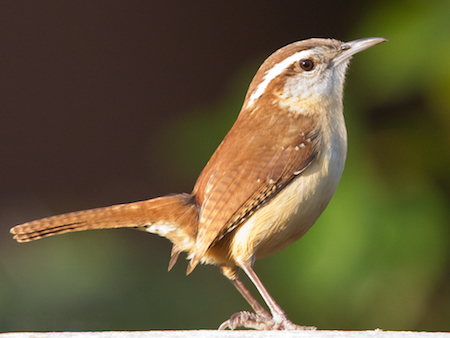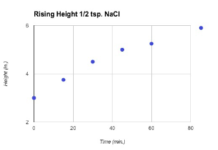by Traci Allen; Farnsley Middle School (Louisville, KY)
Imagine you’re sitting on a bench in the park. You’re bird watching, and you raise your binoculars to your eyes as a cardinal flies by. You’re wearing a large coat, there’s snow on the ground, and it’s the middle of winter. If you live in northern states, that probably sounds strange. Cardinals prefer to spend their winters in southern states, where the winters are warmer. But recently, scientists have found that warm-adapted birds have begun to move farther north.

Project FeederWatch, a winter survey of overwintering birds all across the United States and Canada, has collected data for the past 20 years. These researchers found that over the two decades of study, the temperature at winter bird feeder sites slowly have became warmer. And many overwintering bird species began to spend the winter farther north.
According to Benjamin Zuckerberg, a wildlife biologist at the University of Wisconsin-Madison, bird communities have moved north about 100 miles over the last 20 years.
The researchers collected data on 38 different species of warm-adapted birds across the US and Canada, like blue jays, Carolina wrens, and cardinals. And while many of these species are moving north, they’re not all moving simultaneously.
According to the National Wildlife Federation, one species isn’t moving at all: the red-cockaded woodpecker. They’re tied to a certain southeastern habitat, so they aren’t moving from that region.
While it’s possible that the reason for the birds’ poleward movement could be something else, it’s most likely that climate change is behind it, say experts. The birds might be moving because of habitat loss, or because of the number of bird feeders, but the changes in habitat are usually local and the number of bird feeders hasn’t changed much at all over the last 20 years.
It’s a bit hard to predict how exactly the birds will be impacted by the change in climate. It could be a good thing or a bad thing for the warm-adapted birds. In an email from Zuckerberg to SciJourner, he says that “climate plays a very important role influencing where birds can live. Winter birds can be very sensitive to winter climate… Some species may actually benefit from a warming winter because they can start using new habitats. Other birds that are adapted to colder winters may not do as well.”
There are other obstacles, too, for the migrating bird species. Roads and cities could be in the way. According to Zuckerberg, “it can be difficult to understand which species are in danger of climate change and why.” The poleward movement of the world’s animals is a good sign of global warming, and global warming is a pretty diverse topic. Its effects can be difficult to foresee.
But even if it’s not clear as to whether or not the birds’ northern movement will be a positive or a negative change, the fact is that they’re moving. Traci Allen

This work is licensed under a Creative Commons Attribution-NonCommercial-NoDerivs 3.0 Unported License














kk :wuwu:invite:invite:invite:invite:sweat:ak:invite:cried:flag
very detailed good job your research is great